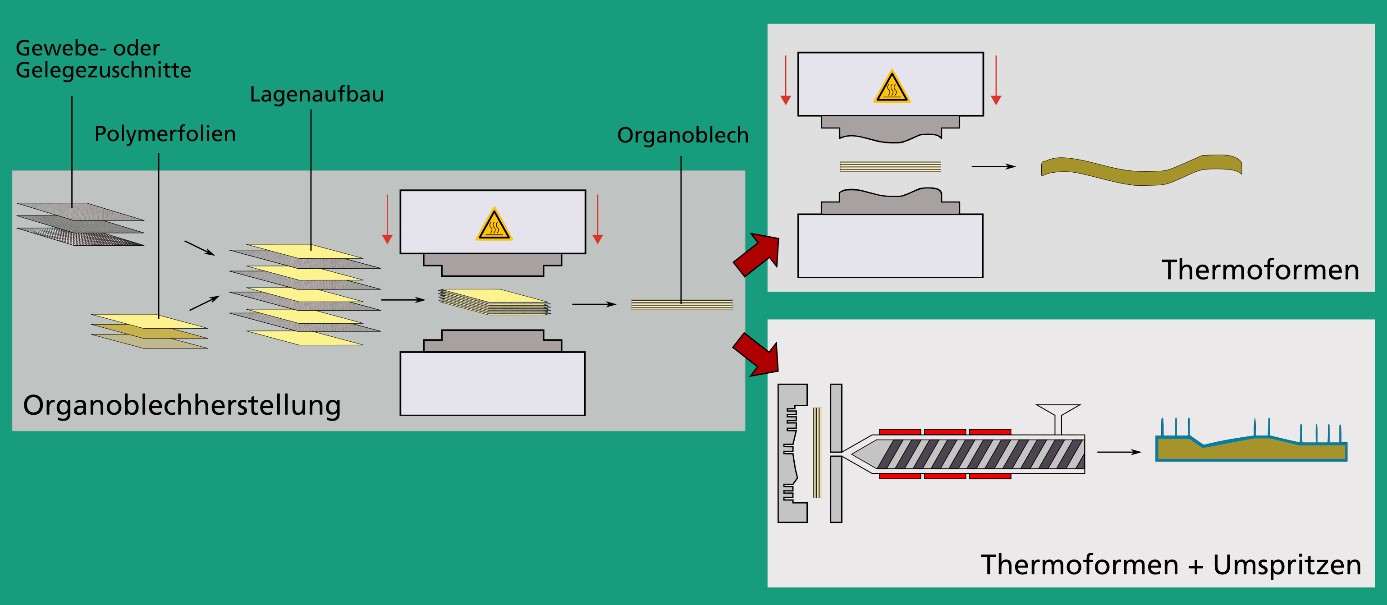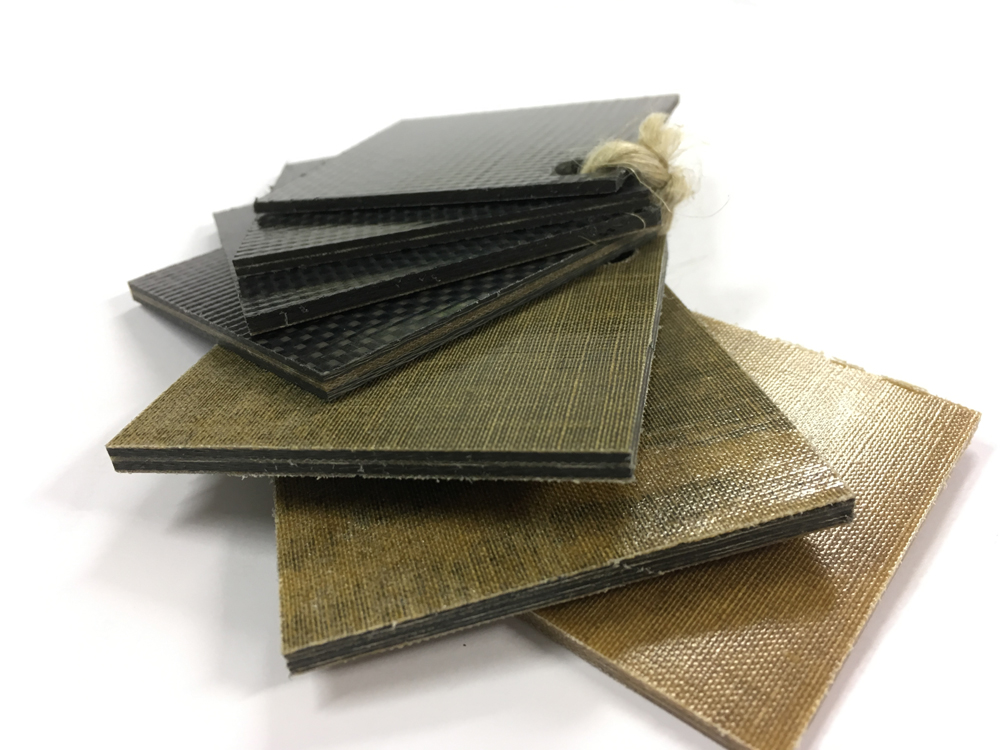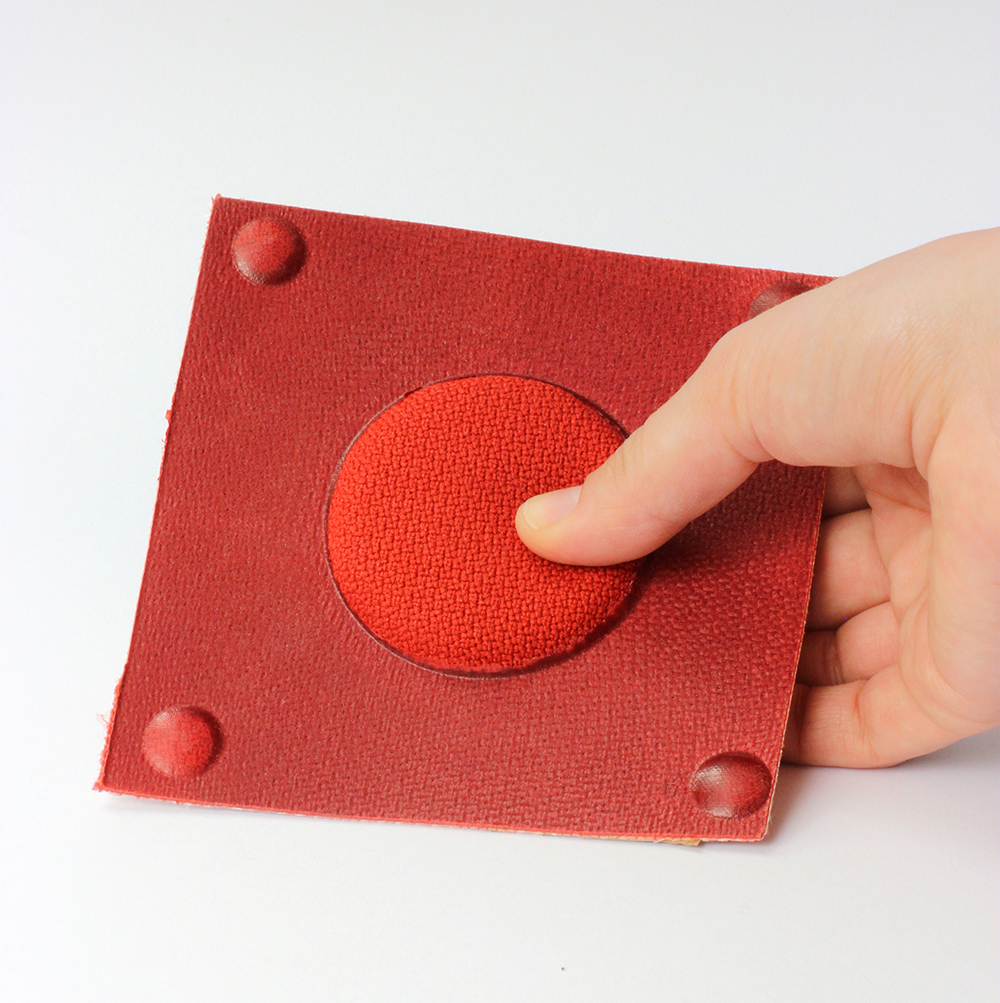In light of the strongly-increasing demands concerning the environmental friendliness of products, focus is being increasingly placed upon lightweight solutions – particularly in aircraft and automotive manufacture. Fiber-reinforced plastics enable the production of lightweight, stable components and also utilize the specific advantages of the applied fibers. At HOFZET®, we process not only natural fibers such as flax, hemp and jute but also technical fibers such as glass, carbon and aramid as well as polyamide and viscose fibers. In addition to the thermosetting plastics, thermoplastics also serve as matrix systems.
Hybrid (bio-)composite materials
Research focus



The main focus at the HOFZET currently lies on composites with a thermoplastic matrix, which are also referred to as organic sheets. Compared to conventional thermosetting composite materials or prepregs, these offer the advantages of reversible deformation and virtually unlimited storage. This results in new fields of design freedom which enlarge the component spectrum of fiber-reinforced composites. As an example, the shaping can be carried out simply and quickly through thermoforming in a die or in the clamping unit of an injection molding machine. For the new and further development of these composites, we have modern plant technology at our disposal. Similar plants are already being used in some areas of industrial large-scale production.
The targeted combination of different substances to form hybrid materials is also an important research area. Within the framework of organic sheet production, we examine widely-differing laminated structures made from, for example, carbon with natural fibers, honeycomb cores, glass fibers and assorted fabrics. The advantageous properties of natural fibers, such as low weight, excellent insulation effect and good CO2 balance, can hereby be combined with the excellent mechanical properties of, for example, carbon fibers or aramid fibers. A further advantage of the substitution of high-priced carbon fibers or aramid fibers through natural fibers is the cost-saving.
For fiber-reinforced plastics, thermoset matrix systems still represent the state of the art, which is why we also carry out research in this field at the HOFZET. The surface modification of natural fibers as well as the vacuum infusion of widely-differing textile semi-finished products are the main issues here, in order to further improve the mechanical and physical properties of the materials.
As a research partner at the Fraunhofer Project Centre Wolfsburg, we are involved in the development of future technologies for the automotive industry. At present, the focus lies upon the hybridization of metals, foams and fiber-reinforced plastics. Here we examine in particular the aspects of fiber-reinforced thermoplastics as well as material recycling. We are also investigating the potential of biogenic technical textiles as well as biogenic polymers.
Our goal is to maximize the proportion of bio-based materials in components for the large-scale production of passenger cars and commercial vehicles. Innovative procedures, for example through the direct combination of the organic sheet technology with injection molding, enable us to produce complex parts with integrated injection geometries, such as reinforcing ribs, in one production step. Through the partial impregnation of textile semi-finished products with matrix, we are opening up new fields of application and functional integration.
 Fraunhofer Institute for Wood Research
Fraunhofer Institute for Wood Research